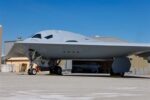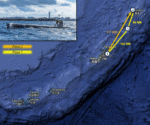The Pentagon is launching a new joint task force focused on countering small unmanned aerial systems (C-sUAS), aiming to equip dispersed U.S. Air Force airmen operating under Agile Combat Employment (ACE) concepts with effective anti-drone capabilities. This move reflects growing concern over the proliferation of low-cost drones and loitering munitions in near-peer conflict scenarios.
Why the Pentagon Is Prioritizing Counter-Drone Capabilities
Small drones—ranging from commercial quadcopters to military-grade loitering munitions—have become ubiquitous on modern battlefields. From Ukraine to the Middle East, adversaries are using low-cost sUAS for ISR (intelligence, surveillance, reconnaissance), targeting, electronic warfare (EW), and even direct strikes.
In response to this evolving threat landscape, the Department of Defense has established a new counter-sUAS task force under the Joint Counter-small Unmanned Aircraft Systems Office (JCO). The initiative seeks to rapidly develop and field mobile C-UAS technologies tailored for ACE operations—where small units of airmen operate from austere or dispersed locations with minimal support infrastructure.
“We need our airmen not only to generate combat power but also defend themselves against drones,” said Lt. Gen. Alexus Grynkewich of Air Forces Central Command (AFCENT). “This is about survivability in contested environments.”
Integrating C-UAS into Agile Combat Employment Doctrine
The ACE concept emphasizes flexibility and dispersion of forces to complicate enemy targeting and enhance operational resilience. However, this decentralization also increases vulnerability to drone surveillance and attack—especially from Group 1–3 UAS (<25 kg).
The new task force aims to integrate layered C-UAS solutions—including kinetic interceptors (e.g., guns or missiles), directed energy weapons (DEWs), and non-kinetic options like RF jamming—into deployable kits suitable for expeditionary use by small air base teams.
- Kinetic: Mobile gun systems or missile-based interceptors such as APKWS or Coyote Block 3
- Non-Kinetic: RF/cyber jammers like DroneDefender or SmartShooter SMASH optics
- Directed Energy: Portable high-energy lasers or microwave systems under development by Raytheon and others
The goal is not just detection but full-spectrum engagement—from early warning via radar/EO/IR sensors to neutralization within seconds.
Red Sands Experimentation Center as Testing Ground
The Red Sands Integrated Experimentation Center in Saudi Arabia will serve as a key venue for testing these emerging C-sUAS capabilities in realistic conditions. Established jointly by U.S. Central Command (CENTCOM) and regional partners in late 2023, Red Sands provides a live-fire environment for evaluating integrated air defense technologies against real-world threats.
AFCENT plans to rotate units through Red Sands for hands-on training with prototype systems before deploying them operationally across CENTCOM’s area of responsibility—including forward operating sites in Jordan, Iraq, Syria, and potentially future Indo-Pacific locales.
Joint Service Collaboration Under JCO Leadership
The Joint Counter-sUAS Office was created in response to Congressional mandates following widespread concern over uncoordinated service-level efforts on drone defense. Now housed under Army leadership at Redstone Arsenal since its establishment in late FY2019, JCO serves as the central authority for developing joint requirements and approving interoperable solutions across services.
This new task force—led jointly by AFCENT and JCO—aims specifically at producing scalable counter-drone packages that can be fielded quickly with minimal logistics burden. It will also coordinate with Special Operations Command (SOCOM), Navy Expeditionary forces, Marine Corps units operating EABO concepts (Expeditionary Advanced Base Operations), and Army IBCS/C-RAM elements where applicable.
C-UAS Training for Airmen at the Tactical Edge
A key component of this initiative is training junior enlisted airmen—not just security forces—with basic counter-drone skills. This includes identifying drone signatures visually or via sensors; operating jamming devices; coordinating with base defense networks; and understanding rules of engagement under contested electromagnetic conditions.
AFCENT envisions “drone defender” roles embedded within each ACE cell—similar to how JTACs are embedded with maneuver units—to provide immediate response without relying on centralized command chains.
“We can’t afford a situation where an $800 quadcopter disables a $100 million aircraft on the ground,” noted one CENTCOM official during recent Red Sands trials.
Challenges Ahead: Integration vs Overload
Despite growing urgency around drone threats, integrating effective C-sUAS into ACE doctrine presents challenges:
- Sustainment: Power supply/logistics for DEWs or radar systems in austere environments
- Cognitive Load: Small teams must manage base ops while monitoring airspace threats
- Spectrum Congestion: EW tools risk interference with friendly comms/GPS signals if misused
- COTS Threat Evolution: Adversaries are rapidly modifying commercial drones with AI/autonomy features that evade current defenses
The Pentagon’s approach appears focused on modularity—fielding plug-and-play systems that can scale based on threat level—and interoperability across services via common data links like Link-16 or future mesh networks enabled by JADC2 architecture.
Outlook: Toward Resilient Expeditionary Airpower
This counter-drone push reflects broader shifts in U.S. military posture toward distributed operations against peer adversaries like China or Russia. As UAVs become more autonomous and harder to detect via traditional radar signatures, tactical-level defenses must evolve accordingly.
If successful, this initiative could help redefine how expeditionary airpower survives—and fights—in denied environments where traditional base infrastructure is untenable or vulnerable.










